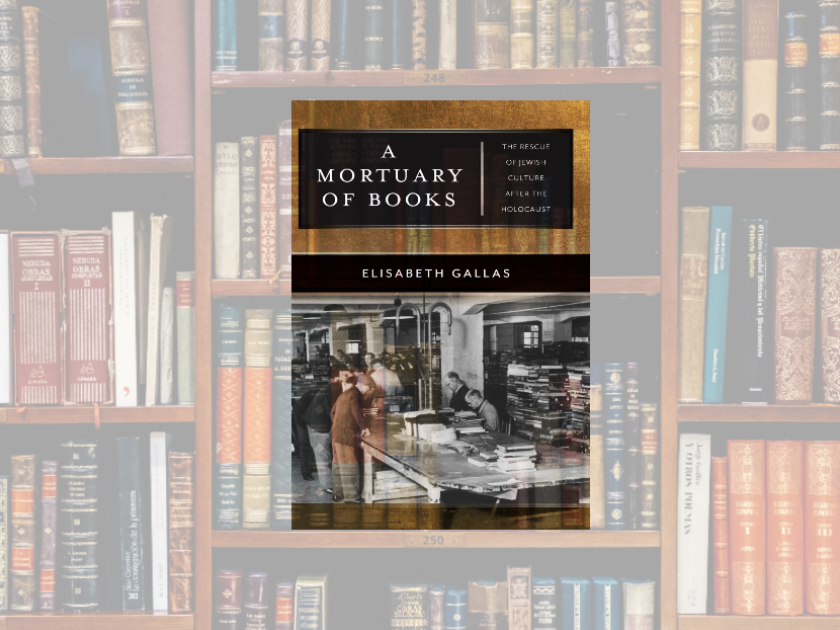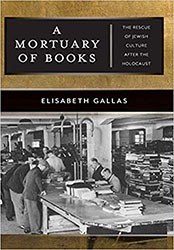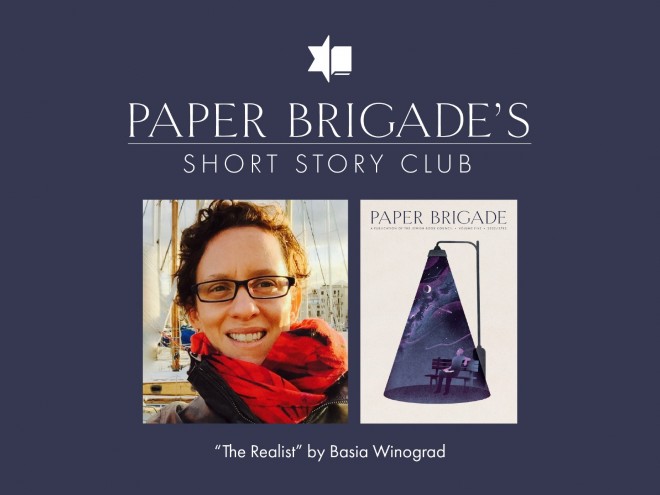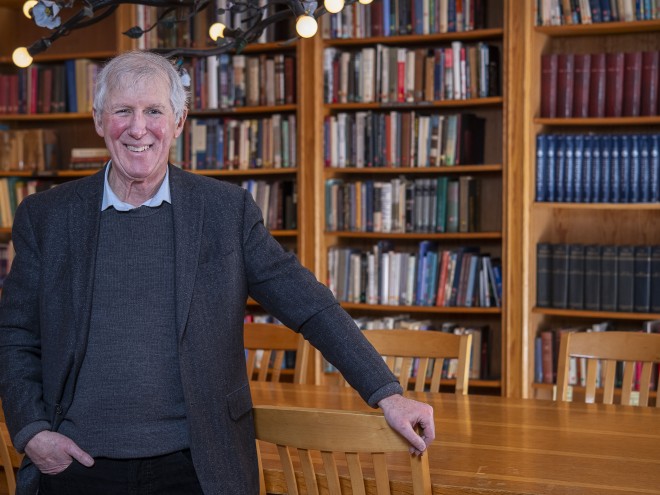
On the morning of February 27, 1946, the sixty-ninth day of the proceedings, Yiddish-speaking poet and partisan Abraham Sutzkever was called to the witness stand at the International Military Tribunal in Nuremberg. Lev Smirnov, deputy prosecutor for the Soviet Union, asked Sutzkever, one of only three Jewish witnesses to testify at the tribunal, to give an account of Jewish life in Vilna (Vilnius) under German occupation, the atrocious living conditions in the ghetto, and the Germans’ persecution and murder of Vilna Jewry. Sutzkever had endured the occupation “from the first to nearly the last day,” having been interned in the ghetto there for more than two years. While standing in court — Sutzkever refused to sit, feeling that he “was saying kaddish for the dead” — he frequently interspersed his testimony with personal reminiscences. Barred from using his native Yiddish, he recalled a first incident, which occurred in the summer of 1941, in short Russian sentences: German soldiers had compelled him, a rabbi, and a boy from his neighborhood to dance naked around a bonfire in front of the Old Synagogue while throwing its Torah scrolls into the flames. Forced to sing Russian songs at gunpoint as the sacred scrolls went up in smoke, the three came close to passing out. The fact that Sutzkever chose to mention this brutal and traumatic “act in the circus,” as the Germans had called it, in the short amount of time available for his testimony indicates the existential significance he attributed to it. He considered the Nazis’ deliberate destruction of religious and cultural treasures a key element in their policy of annihilation, one that must be acknowledged during the court proceedings. The Jews of Vilna — one of the most prominent centers of Jewish cultural activity in Eastern Europe, home to precious collections and famous cultural and educational institutions — were exposed in the most drastic way to the cultural genocide that accompanied the Nazis’ systematic acts of mass murder. The situation there represented in nuce what Polish-born Jewish jurist Raphael Lemkin — initiator of the UN Genocide Convention of 1948 — had in mind when he emphasized that the “systematic and organized destruction of the art and cultural heritage in which the unique genius and achievement of a collectivity are revealed in fields of science, arts and literature” must be understood and legally addressed as “an attack targeting” this collectivity.
He considered the Nazis’ deliberate destruction of religious and cultural treasures a key element in their policy of annihilation, one that must be acknowledged during the court proceedings.
Sutzkever’s diary from the time of occupation meticulously documents both sides of the Nazis’ destructive frenzy: “The Germans were to wipe from the face of the earth five centuries of Jewish culture in Vilna.” During his internment, he had to watch, daily, as German special forces hunted down “the printed Jewish word with the same zeal and relentlessness that the Gestapo exhibited when tracking down every last hidden Jew.” From January 1942 on, the Reichsleiter Rosenberg Taskforce (Einsatzstab Reichsleiter Rosenberg; ERR) rampaged through Vilna, its staff confiscating every artifact and book of Jewish provenance they could lay their hands on. Much of this material was sold to paper mills and leather factories, incinerated, or used as heating fuel; selected parts were confiscated and transferred to Germany. Sutzkever was among the forty Jewish forced laborers working in the occupied premises of the renowned Yiddish Scientific Institute (Yidisher Visnshaftlekher Institut; YIVO), which served as the task force’s depot. They were obliged to sort and prepare for transport the valuable items chosen for further use in German research institutes. Faced with the threat of total cultural destruction, they decided to form a clandestine group and smuggled documents, books, and works of art into the ghetto, where they were hidden away. It is thanks to the dedication of this group, known as the “Paper Brigade,” that some of the most precious literary, artistic, and scientific materials from Jewish Eastern Europe, including manuscripts by Sholem Aleichem and drawings by Marc Chagall, have survived to this day. Sutzkever was one of the few members of the brigade to survive. After fleeing to join the partisans in the forests surrounding Vilna in September 1943, he escaped to Moscow with the help of the Jewish Anti-Fascist Committee, […]. Immediately after the liberation of Vilna by the Soviet Army in July 1944, Sutzkever returned there, devoting himself to cached cultural property — the only glimpse of hope still emanating from this city of death, as he noted at the time: “If not for the hidden cultural treasures, I don’t know if I would have had enough strength to return to my home city. [ … ] I knew that everyone has been executed by the murderers. I knew that my eyes would be blinded with pain as soon as I saw the Wilia River. But the Hebrew letters that I had planted in Vilna’s soil sparkled at me.” Yet his hopes soon faded again. Together with the few other survivors he encountered there, Sutzkever aimed to establish a museum of Jewish art and culture with the remaining material. This plan faltered due to Soviet resistance, and once again they had to prevent material from being dispersed and confiscated. They decided to send it west. Sutzkever and his comrade Shmerke Kaczerginski single-handedly transported partial collections in suitcases via Poland to Paris, where they were sent on to the YIVO in New York, their home ever since.
Faced with the threat of total cultural destruction, they decided to form a clandestine group and smuggled documents, books, and works of art into the ghetto, where they were hidden away.
By other routes, the portion of the Vilna holdings stolen by Rosenberg’s task force made it to the United States as well. After their incorporation into the Nazi Institute for Research on the Jewish Question (Institut zur Erforschung der Judenfrage) in Frankfurt am Main, the precious collections had been evacuated to the Hesse town of Hungen in 1944 due to increasingly severe bombing raids. American soldiers of the Monuments, Fine Arts, and Archives Unit (MFA&A), tasked with protecting the European cultural heritage, discovered these books and other objects while advancing into German territory. All of them were placed under the stewardship of the American military government, which initiated a large-scale cultural restitution campaign to return millions of books, archival documents, artworks, and ritual objects to their former owners, states of origin, or official trustee organizations representing the Nazis’ victims. Among the restored collections were more than four hundred boxes of books and other objects from Vilna; […] these were handed over to the YIVO in New York, the official successor to the destroyed institute in the Lithuanian capital. YIVO soon developed into the most important commemorative and research center for Eastern European Yiddish culture worldwide, the material fragments saved from Vilna playing an important part in its attempts to create a sense of continuity between past and present.
The miraculous story of Sutzkever’s acts of cultural rescue and the salvage of YIVO property through the herculean American restitution program attests to both the tremendous attention Jews paid to the theft of cultural property and the importance they attached to its preservation and restoration. In the immediate postwar period, the historically unprecedented German confiscation, spoliation, and dispossession of books, documents, and artworks were followed by an equally unprecedented history of restitution, one often endowed with a tremendous symbolic charge by the individuals and organizations involved. The present book aims to tell this story. It took place between 1944 and 1952 in Europe, the United States, and Israel, but its true center was the Offenbach Archival Depot. From this essentially American institution on German soil — established during the winter of 1945 by the American military government to house and eventually restore the books, archival materials, and ritual objects of mainly Jewish provenance found by the MFA&A — more than four million items were either returned to their former owners or distributed to the new sites of Jewish community life. Objects and documents from every corner of Europe were to be found in Offenbach. They rendered visible the wide geographical scope of the German war of extermination while also laying bare the magnitude, diversity, multilingualism, and centuries-old traditions of European-Jewish culture now reduced to material fragments.
Every single volume stored there seemed to her a “testament of a murdered civilization,” which it was absolutely imperative to save.
One of the four main protagonists discussed in this book, later historian of the Holocaust Lucy S. Dawidowicz (1915 – 1990), who came to work at the Offenbach Archival Depot in 1947 as an employee of the American Jewish Joint Distribution Committee (also known as the Joint), left one of the most impressive accounts of the place. Her recollections give us a sense of the feelings that overwhelmed contemporaries at the sight of the depot, which she called a “mortuary of books.” Every single volume stored there seemed to her a “testament of a murdered civilization,” which it was absolutely imperative to save. Dawidowicz devoted several months to finding, identifying, claiming, and sorting volumes originating in Vilna. […] She was eventually to play the key role in organizing the transfer of the Vilna collections from Germany to the United States.
But far from all the books stored in Offenbach could be identified in the same way as these collections, let alone be restored to their owners. Hundreds of thousands of documents and volumes were heirless and unidentifiable. In accordance with the prevailing laws on restitution after armed conflict — agreed upon by the Allies at the Paris Conference on Reparations in November and December 1945 and at subsequent meetings of the Allied Control Council — they were most likely to be returned to their countries of origin. Most Jewish actors strongly opposed this. After the murder of two-thirds of Europe’s Jewish population and the destruction of their institutions, few Jews would benefit from such returned objects. To the contrary, they mostly risked disappearing into state collections. The idea that even more of the Jews’ cultural heritage might be lost to them or restituted to states without significant Jewish communities — perhaps even to the German state — was unbearable to Jewish campaigners. […] Restoring cultural objects to their previous state of ownership had become impossible, so a new approach was imperative. Jewish organizations in the United States and Great Britain made impassioned pleas […] for regulations that would allow stolen property to be returned to Jewish ownership, even if this generally required its transfer to new places. They proposed the transformation of heirless goods into the collective property of the Jewish people, which could be claimed by an agency entrusted with representing that people.
Eventually, JCR took charge of more than half a million books and several thousand ritual objects, distributing them to hundreds of Jewish communities and institutions around the world.
These impulses prompted the formation of a New York – based organization that was to be the leading protagonist of cultural restitution in the early postwar period: the Jewish Cultural Reconstruction, Inc. (JCR). Established in 1947, the American administration recognized this corporation — made up of leading international Jewish organizations in the United States, Palestine/Israel, and Europe — as the Jewish trustee for heirless cultural property in 1949. Its official recognition as a nonstate body that could act in the name of all Jews was a novelty in the history of Jewish politics. For the first time, Jews could represent their interests as equal partners in an international agreement. Also novel was the potential to treat heirless property like individual property in private law; departing from the routes previously envisaged, this property instead followed the paths taken by the Jewish people, distributed to places where this collective claimant was now located. This extraordinary decision gave the Jewish collectivity a voice and a meaningful status in the realm of transitional justice — in contrast to Nuremberg, where Jewish representatives had fought in vain to gain official status as plaintiffs or amicus curiae. Through the agreement reached at the military government’s German headquarters in February 1949, the American administration acknowledged that in the wake of the Holocaust, the treatment of Jewish cultural property, especially books and ritual objects, was a sensitive issue, one that had to be resolved in full accordance with Jewish concerns. The overriding necessity of finding a just approach to the masses of objects in American hands must surely have played into this decision: those involved were overwhelmed by the sheer quantity of material. Eventually, JCR took charge of more than half a million books and several thousand ritual objects, distributing them to hundreds of Jewish communities and institutions around the world.
Elisabeth Gallas is chief research associate at the Leibniz Institute for Jewish History and Culture — Simon Dubnow in Leipzig, Germany.
Alex Skinner holds a first-class MA in Scandinavian Studies and German from the University of Edinburgh and an MSc in social anthropology from the London School of Economics. He has translated more than twenty books from German to English in the humanities and social sciences.



